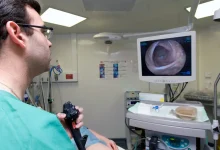Mastering Post-Cycle Therapy: The Critical Role of PCT Steroids
PCT Steroids

The world of performance enhancement often involves the use of anabolic steroids to achieve specific fitness goals. While the benefits of these substances are well-documented, it’s equally important to address the potential consequences, especially in terms of hormonal balance. Post-cycle therapy (PCT) becomes a pivotal aspect of a responsible and informed approach to using steroids. In this blog, we will delve into the critical role of PCT steroids, exploring their purpose, the importance of hormonal recovery, and the considerations individuals should keep in mind when navigating the post-cycle phase.
Understanding Post-Cycle Therapy (PCT):
Post-cycle therapy is a strategic approach to help the body recover its natural hormonal balance after a period of anabolic steroid use. Anabolic steroids, including those used for performance enhancement, can suppress the body’s endogenous (natural) production of testosterone. PCT aims to kickstart the body’s natural testosterone production, minimize the risk of side effects, and preserve the gains made during the steroid cycle.
The Importance of PCT Steroids:
1. Restoring Hormonal Balance:
Anabolic steroids, when introduced into the body, signal to the endocrine system that sufficient testosterone is present. In response, the body may reduce or even halt its natural production of testosterone. PCT steroids help stimulate the production of luteinizing hormone (LH) and follicle-stimulating hormone (FSH), which are essential for natural testosterone synthesis.
2. Preventing Testicular Atrophy:
Prolonged use of anabolic steroids can lead to testicular atrophy, where the testes shrink due to decreased stimulation from LH and FSH. PCT steroids help prevent or minimize testicular atrophy by restoring the signaling pathways that stimulate testosterone production.
3. Preserving Gains:
The gains achieved during a steroid cycle are the result of increased protein synthesis, nitrogen retention, and enhanced recovery. PCT plays a crucial role in preserving these gains by maintaining an anabolic environment and preventing the loss of muscle mass that can occur during the transition from exogenous (external) steroid use to endogenous (natural) testosterone production.
4. Minimizing Side Effects:
Abruptly discontinuing steroid use without proper PCT steroids can lead to a host of side effects, including mood swings, fatigue, muscle loss, and a prolonged recovery of natural testosterone production. PCT helps mitigate these side effects and facilitates a smoother transition to post-cycle hormonal balance.
Common PCT Steroids:
1. Selective Estrogen Receptor Modulators (SERMs):
SERMs are a class of compounds that act as estrogen receptor agonists or antagonists, depending on the tissue type. In the context of PCT steroids, the most commonly used SERMs are Tamoxifen (Nolvadex) and Clomiphene (Clomid). These compounds block estrogen receptors in the hypothalamus and pituitary gland, promoting the release of LH and FSH.
2. Human Chorionic Gonadotropin (hCG):
hCG is a hormone that mimics the action of LH in the body. It is sometimes used in conjunction with SERMs during PCT to stimulate the testes and prevent testicular atrophy. However, hCG usage requires careful monitoring, as prolonged or excessive use can desensitize the testes to LH and FSH signals.
3. Aromatase Inhibitors (AIs):
Aromatase inhibitors, such as Anastrozole and Exemestane, are used to control estrogen levels during PCT steroids. While SERMs primarily block estrogen receptors, AIs prevent the conversion of androgens into estrogen. Controlling estrogen levels is crucial for avoiding estrogen-related side effects during the recovery phase.
Considerations for a Successful PCT:
1. Individualized Approach:
The optimal PCT steroids protocol can vary among individuals based on factors such as the duration and intensity of the steroid cycle, the specific steroids used, and individual response to PCT medications. A one-size-fits-all approach may not be effective, highlighting the importance of tailoring PCT to individual circumstances.
2. Timing is Key:
Initiating PCT at the right time is crucial for its effectiveness. PCT typically begins when exogenous steroids have cleared the system, allowing the body to transition to natural testosterone production.
3. Gradual Tapering:
Abruptly discontinuing steroid use can shock the body and hinder the effectiveness of PCT steroids. Some individuals choose to incorporate a gradual tapering of steroid dosages towards the end of the cycle, allowing for a smoother transition to the post-cycle phase.
4. Monitoring Blood Work:
Regular blood tests are essential during PCT steroids to assess hormonal levels, liver function, and overall health. This monitoring helps adjust the PCT protocol as needed and ensures a safe and effective recovery.
5. Lifestyle Factors:
Factors such as nutrition, sleep, and stress management play a crucial role in hormonal health. Optimizing lifestyle factors during and after PCT contributes to overall well-being and supports the body’s recovery.
Potential Challenges and Side Effects:
1. Estrogen Rebound:
Discontinuing the use of aromatase inhibitors too quickly or without proper monitoring can lead to an estrogen rebound. This can result in estrogen-related side effects, including water retention, gynecomastia, and mood swings.
2. Testosterone Levels Variability:
Achieving stable testosterone levels post-PCT can be challenging. Some individuals may experience fluctuations, and maintaining a consistent hormonal profile may require ongoing monitoring and adjustments to the PCT protocol.
3. Psychological Challenges:
The transition from a steroid-enhanced state to a post-cycle phase can be accompanied by psychological challenges. Mood swings, fatigue, and a potential loss of motivation are common, emphasizing the importance of psychological support during this period.
Conclusion:
Mastering post-cycle therapy is an integral aspect of a responsible and informed approach to the use of anabolic steroids for performance enhancement. PCT steroids, when used appropriately, play a critical role in restoring natural hormonal balance, preserving gains, and mitigating potential side effects. However, the complexity of individual responses, the variety of steroids used, and the nuanced nature of recovery highlight the importance of a personalized and well-monitored approach to PCT.
Individuals considering or currently undergoing PCT should prioritize their health, seek guidance from healthcare professionals, and be attentive to the signals their bodies provide. Responsible steroid use, coupled with a comprehensive post-cycle strategy, can contribute to a more sustainable and health-conscious approach to achieving fitness and performance goals.


